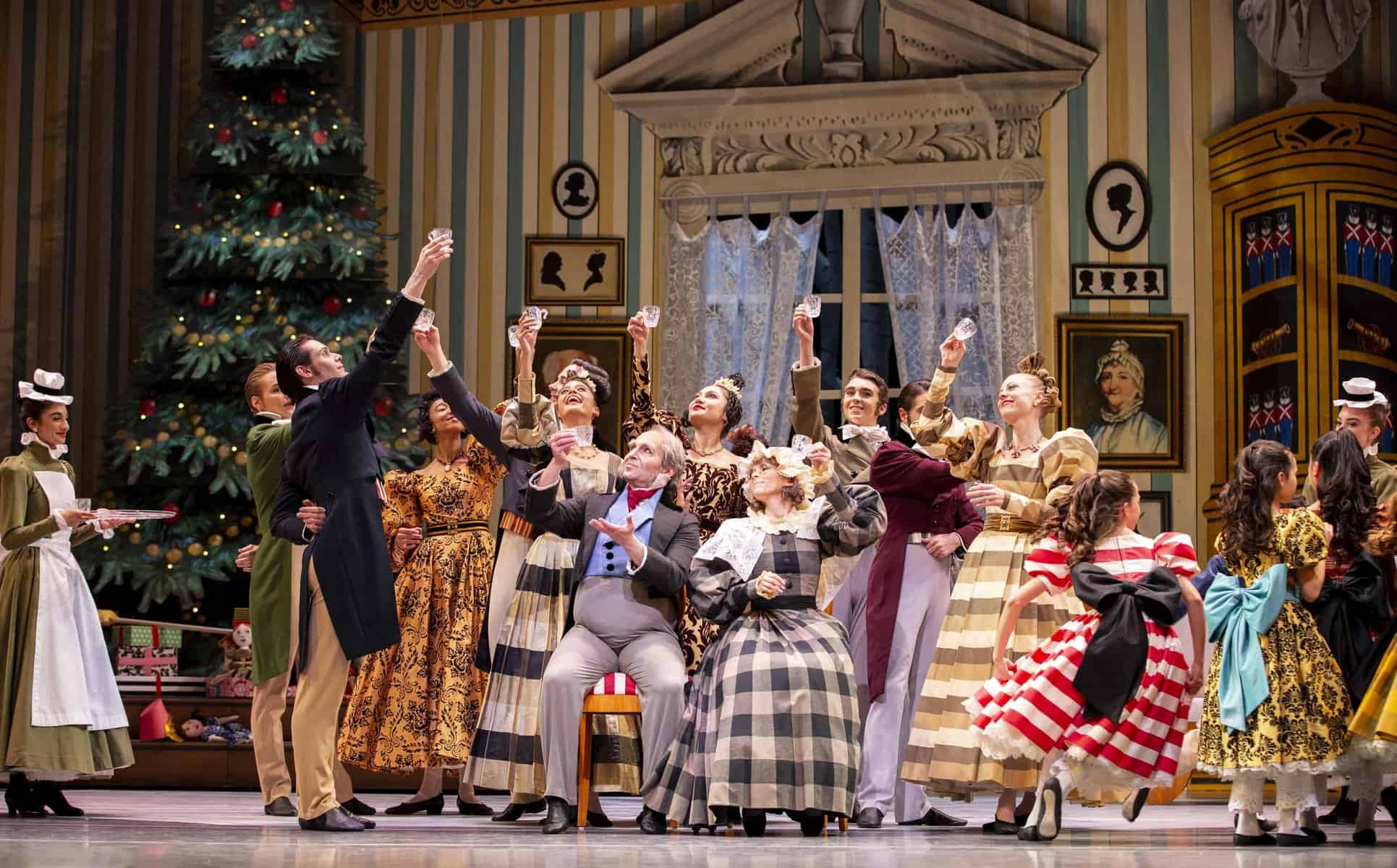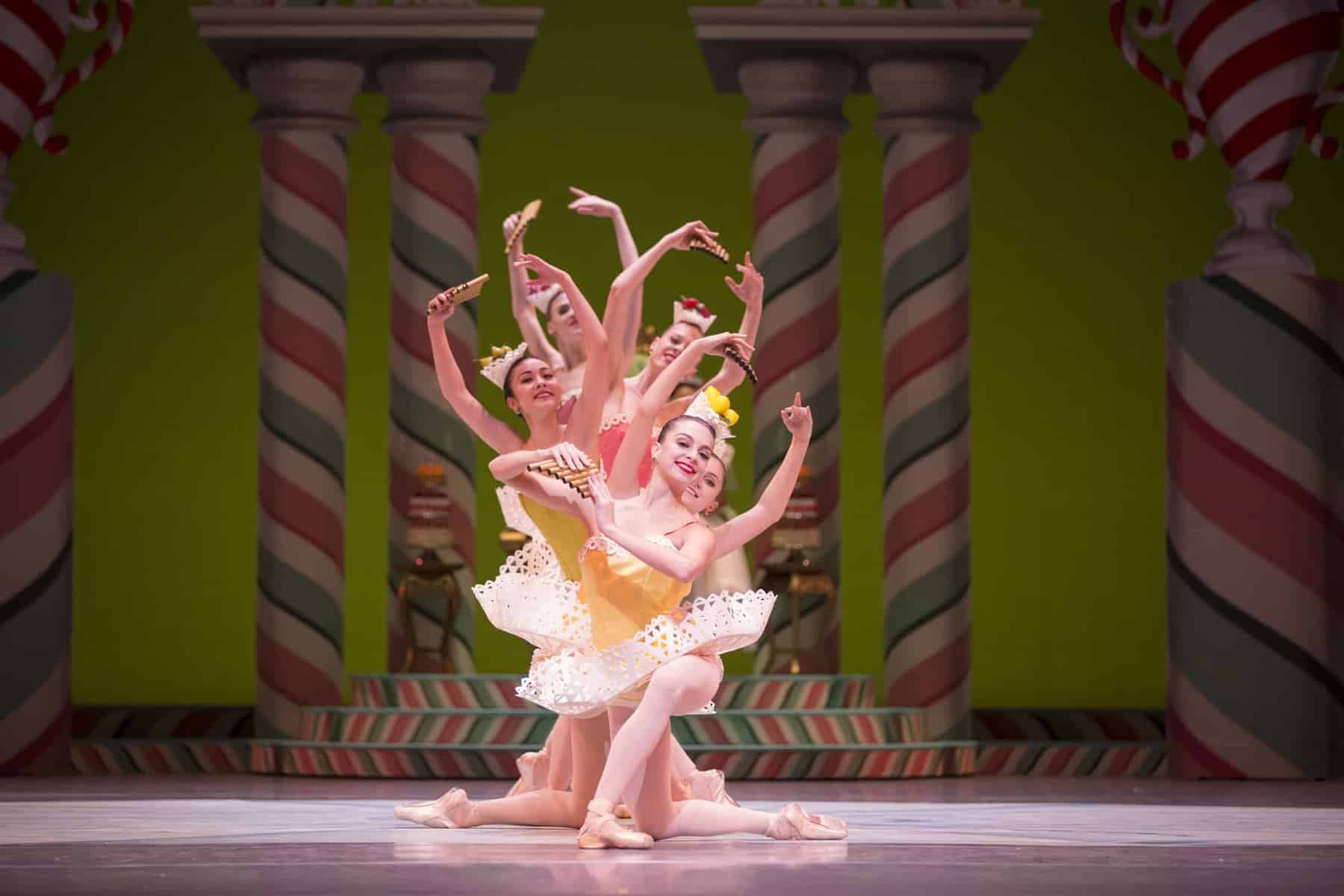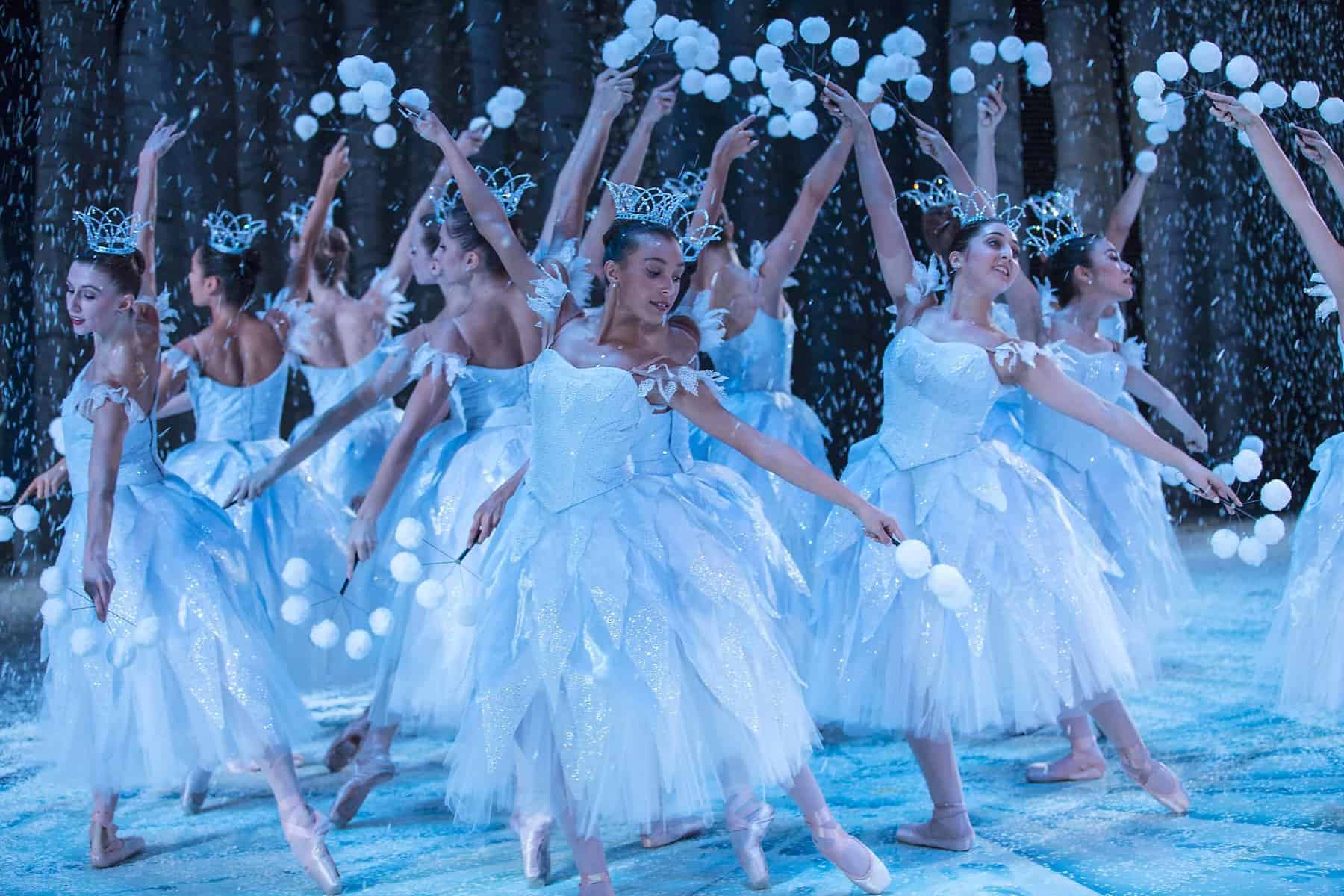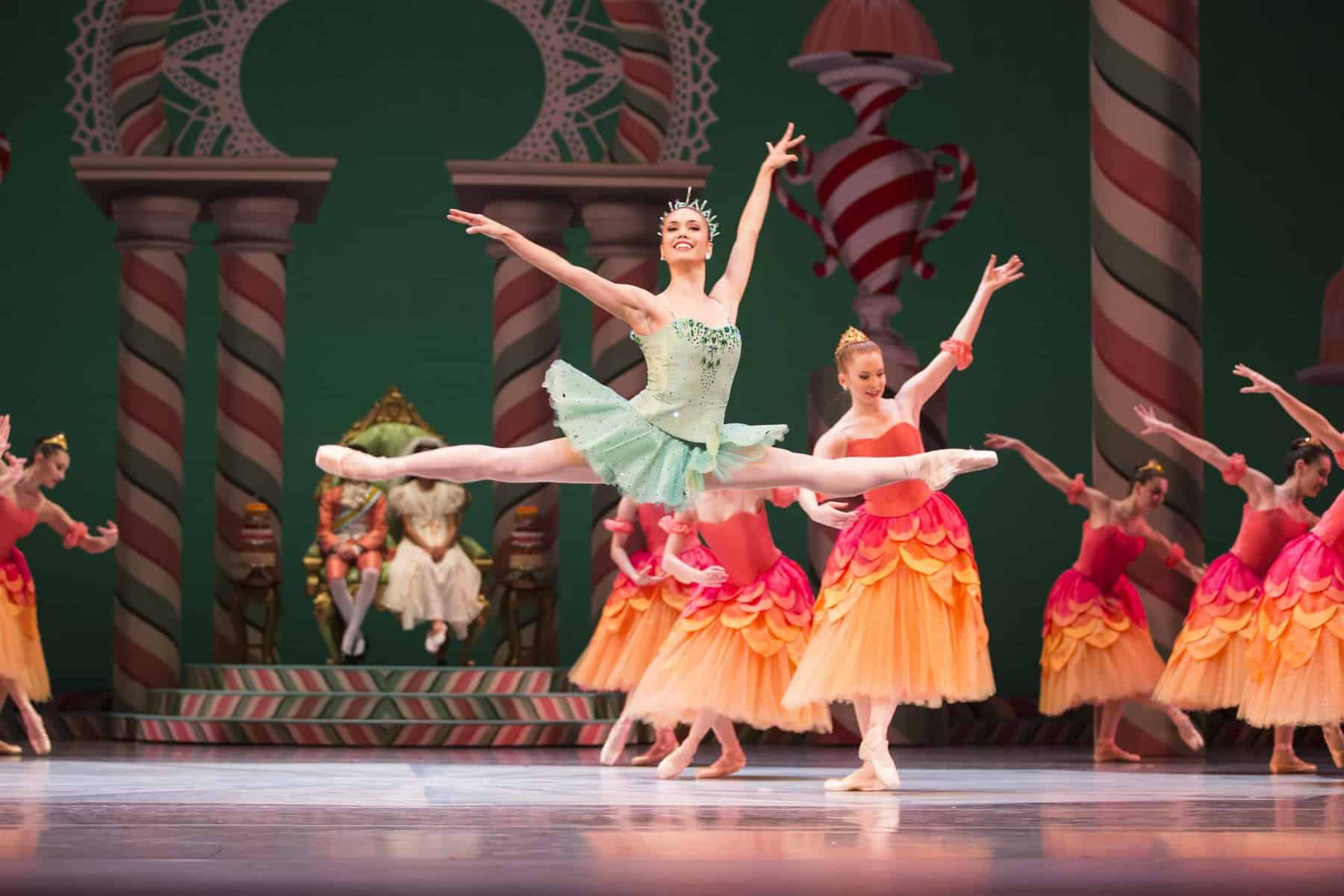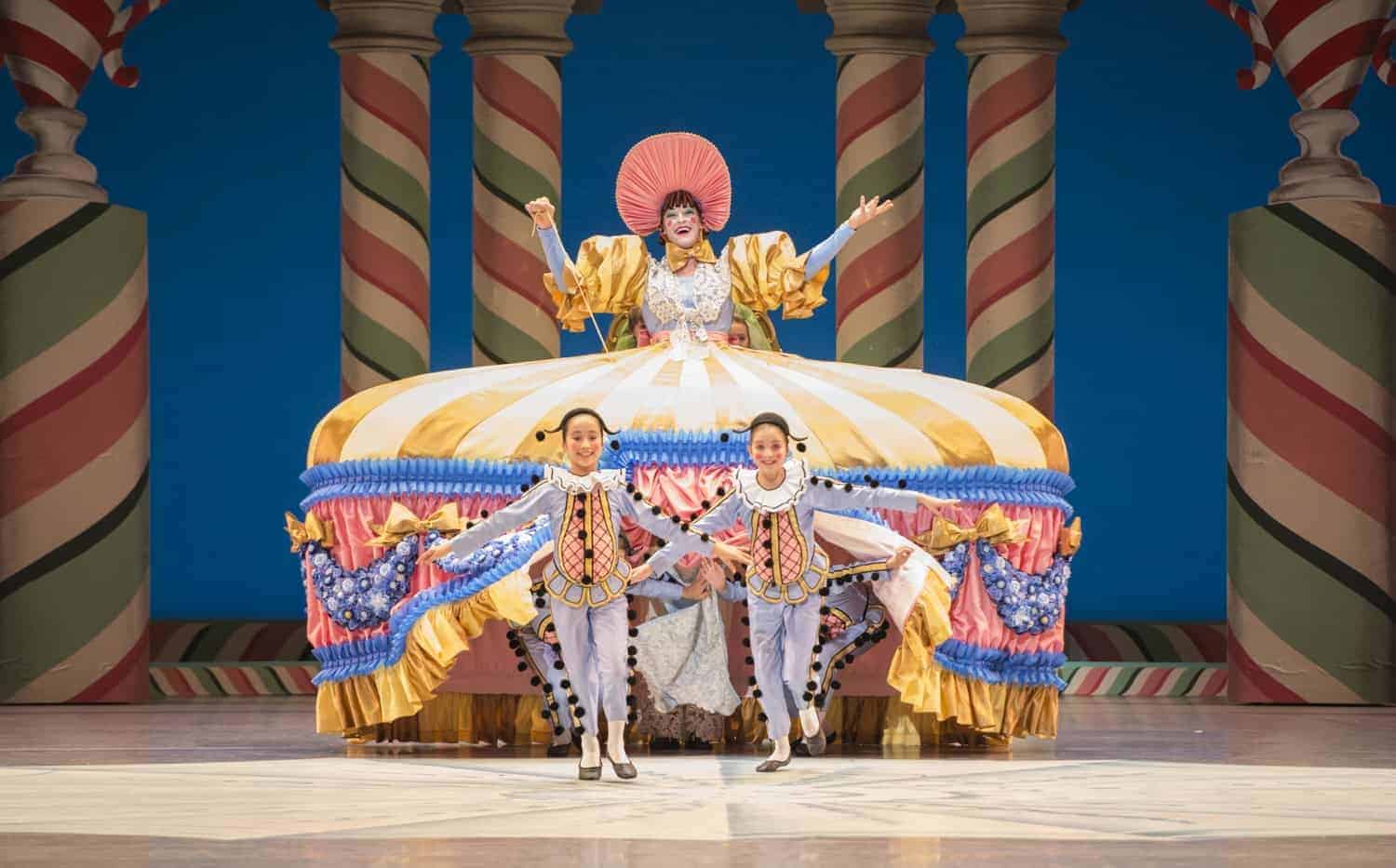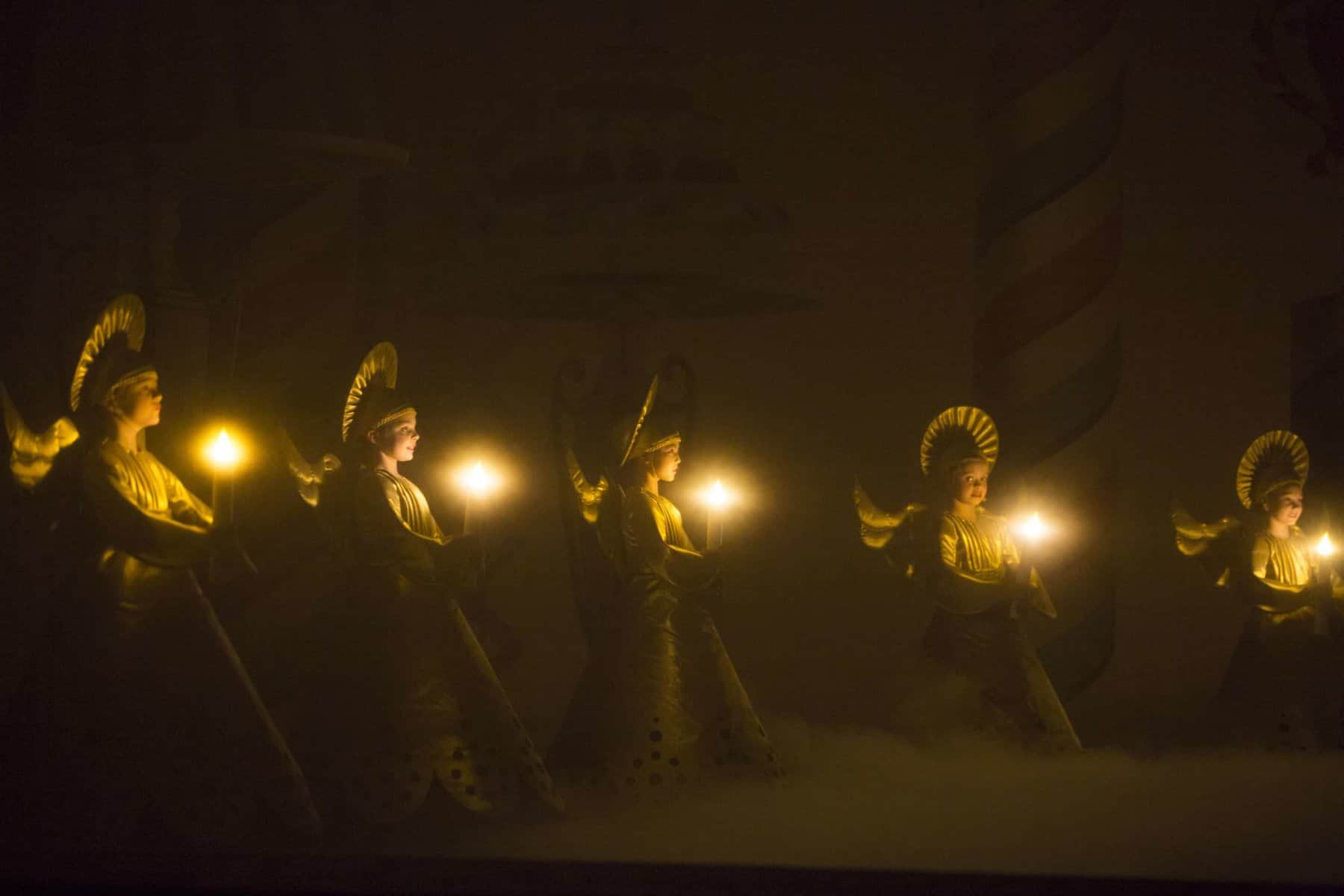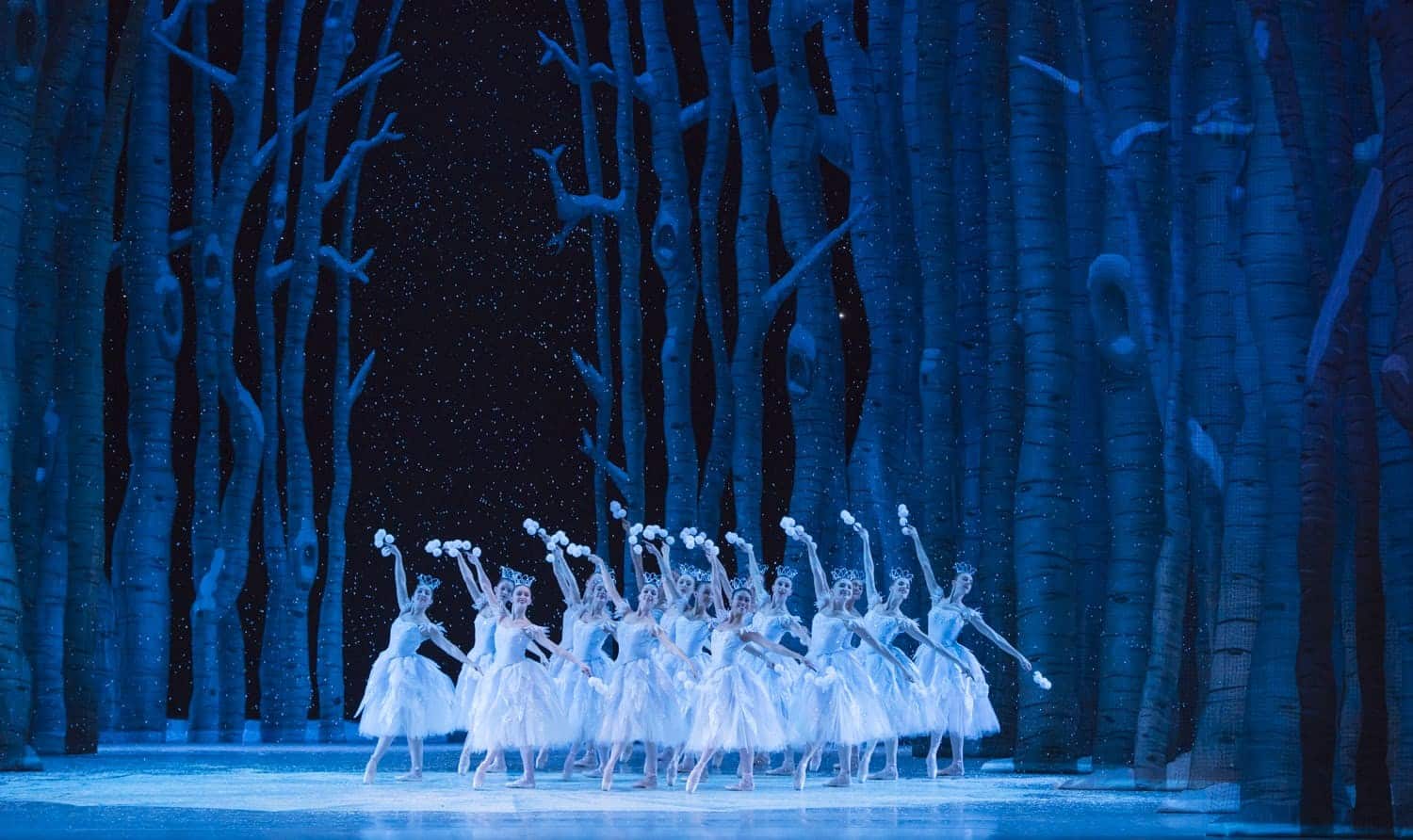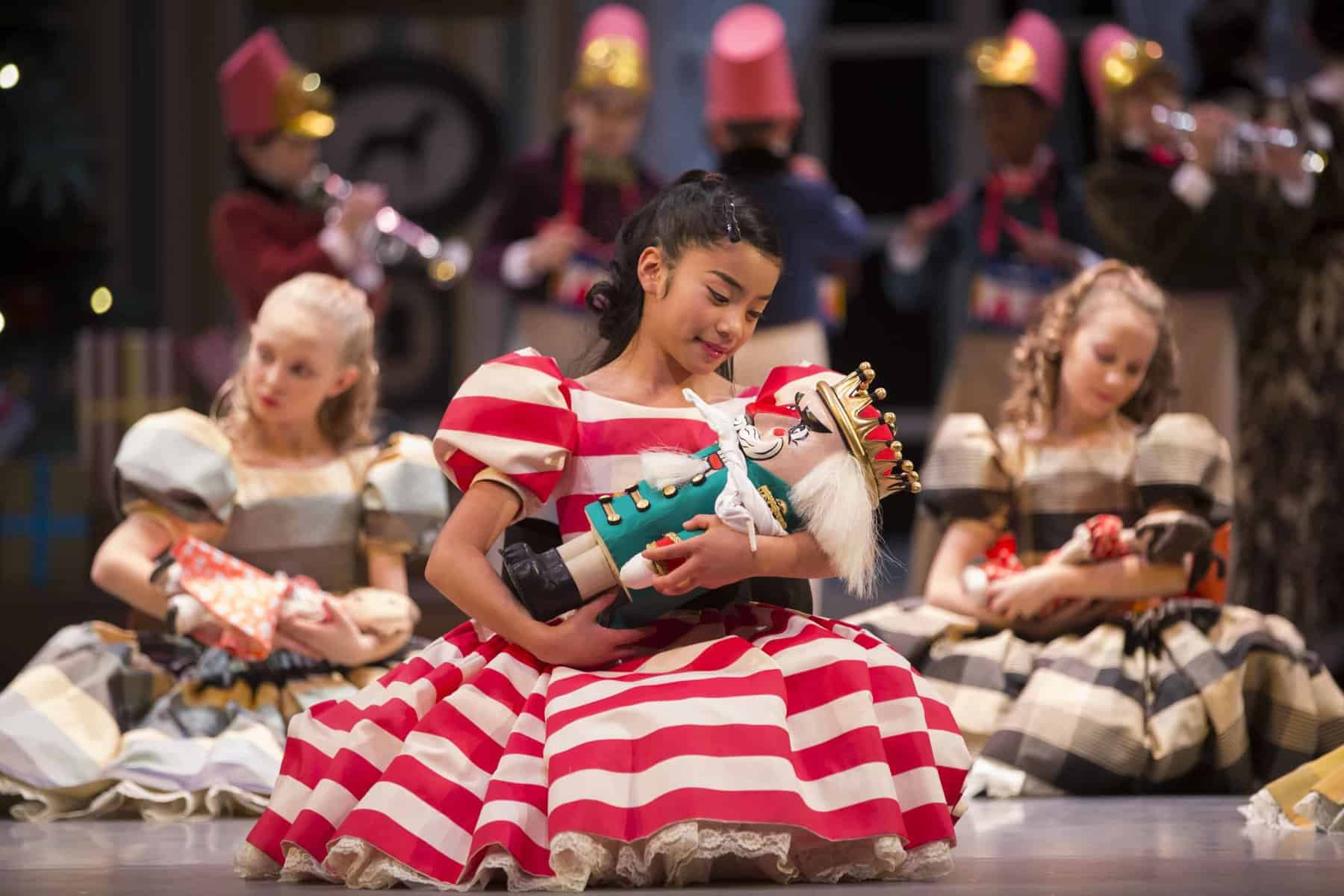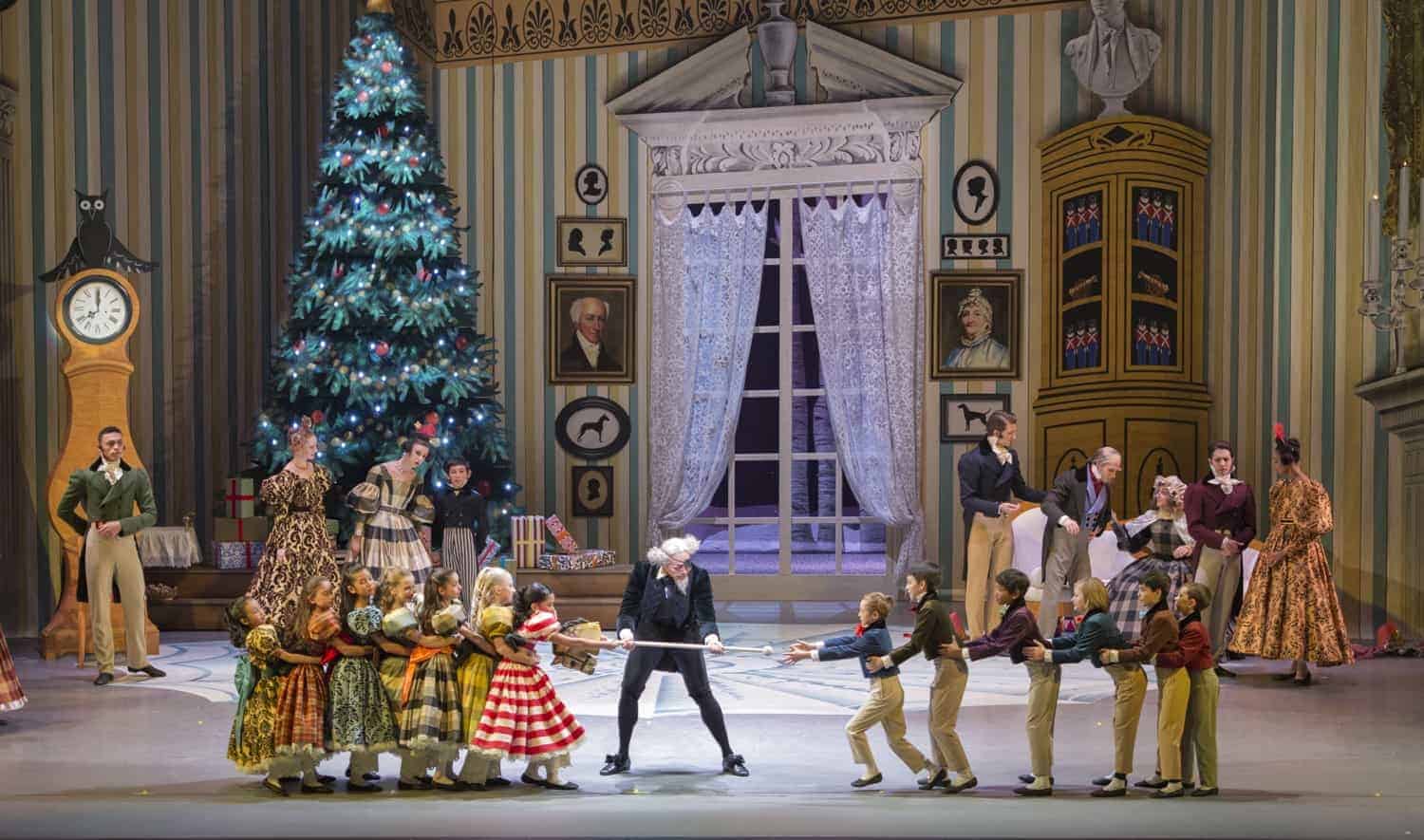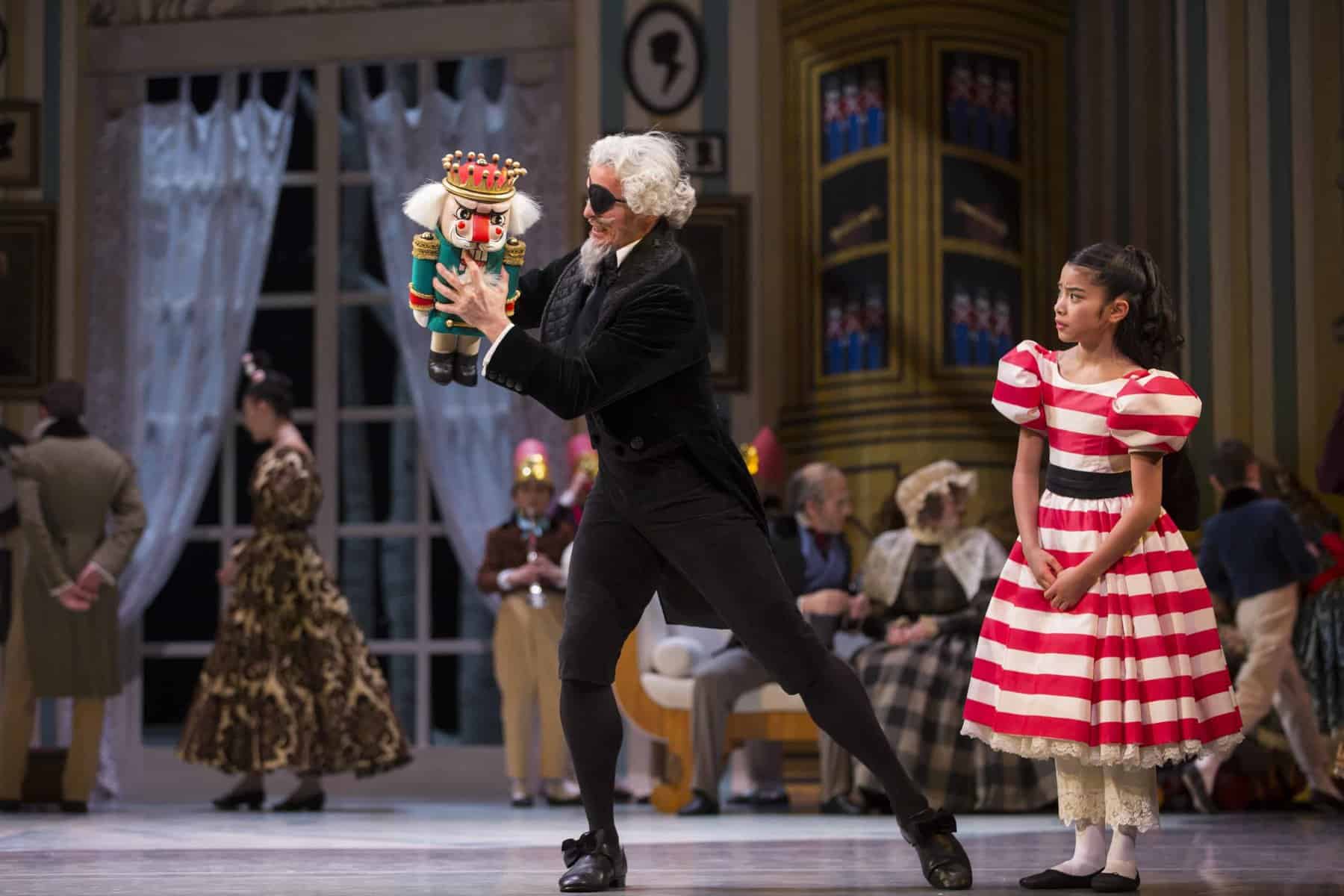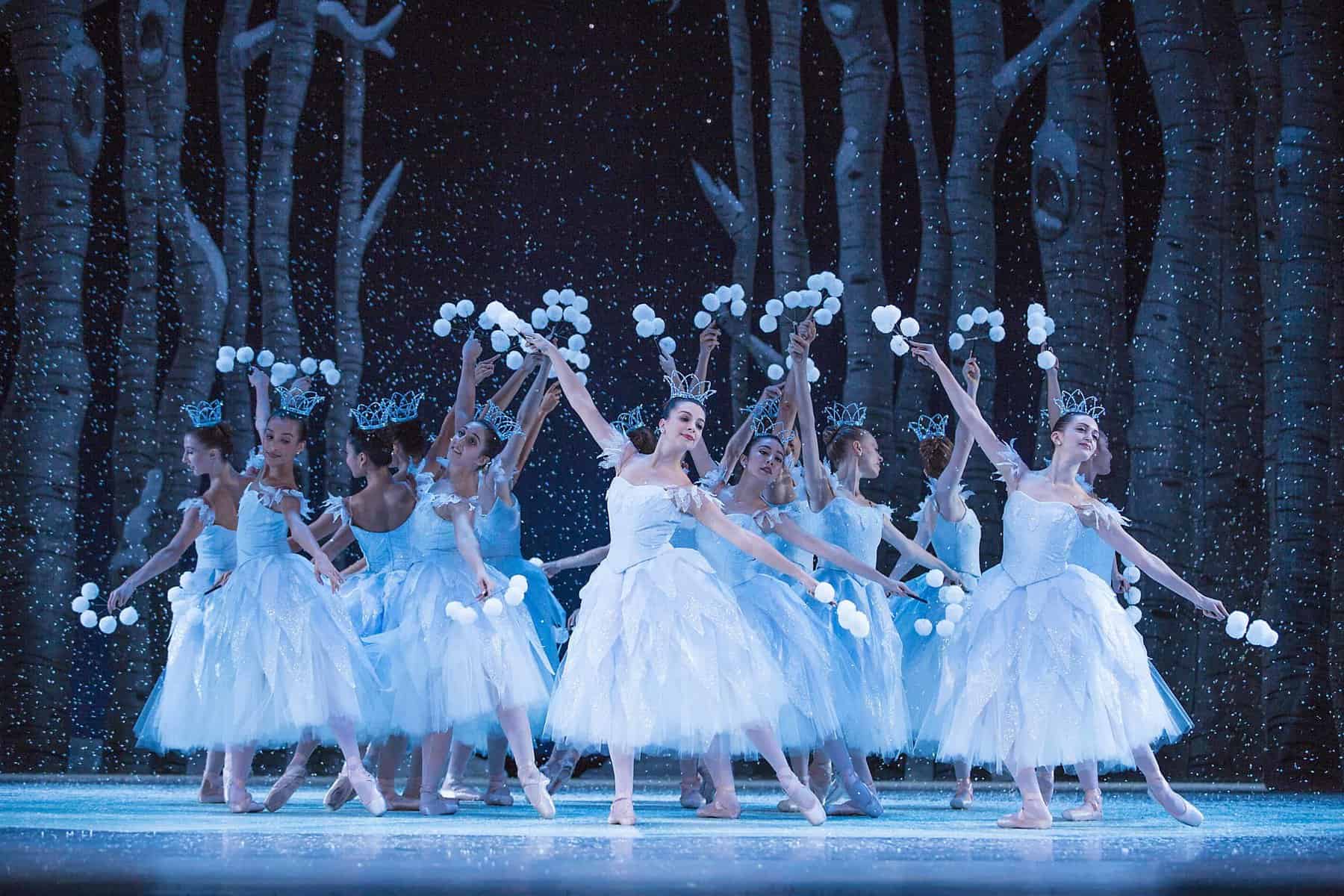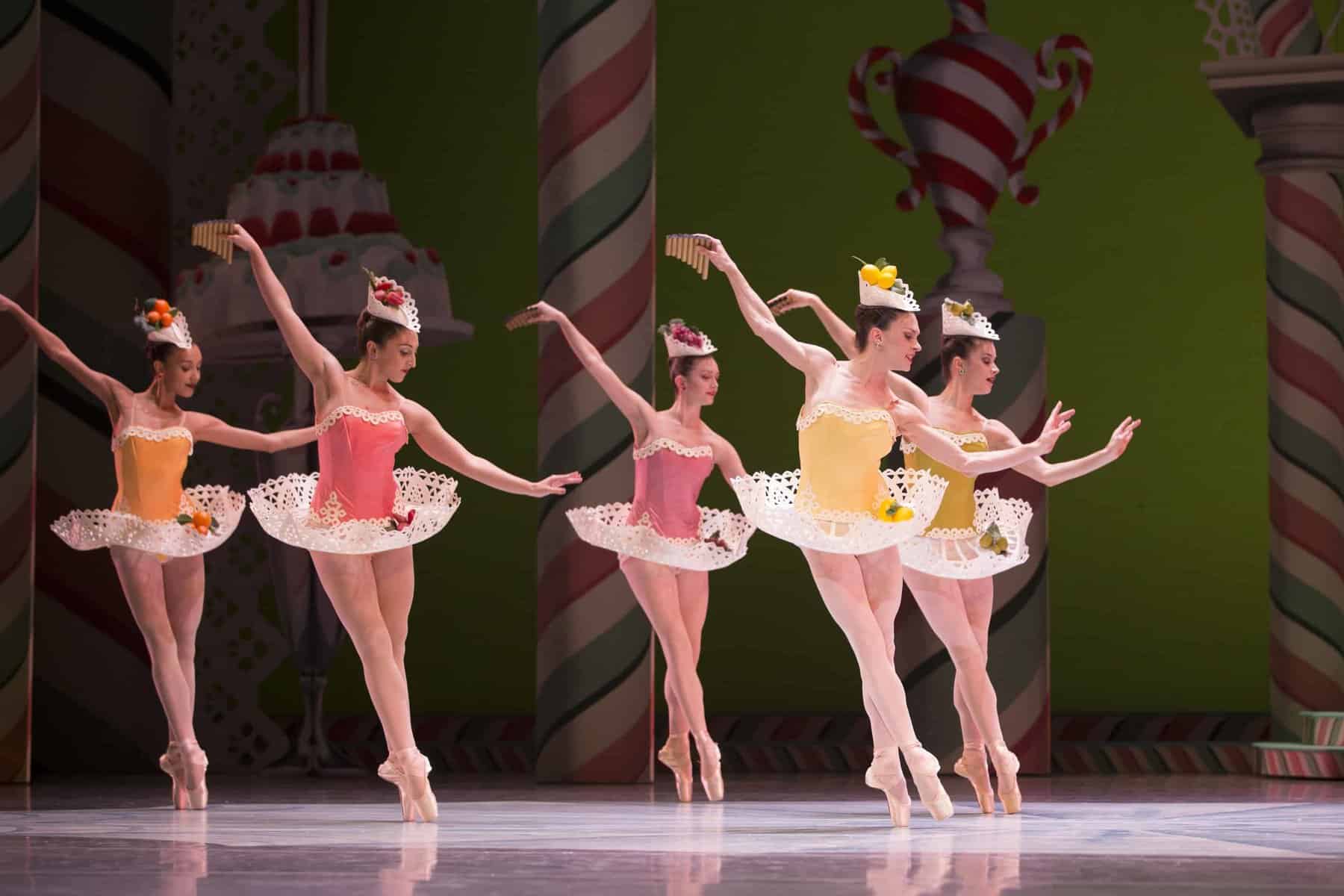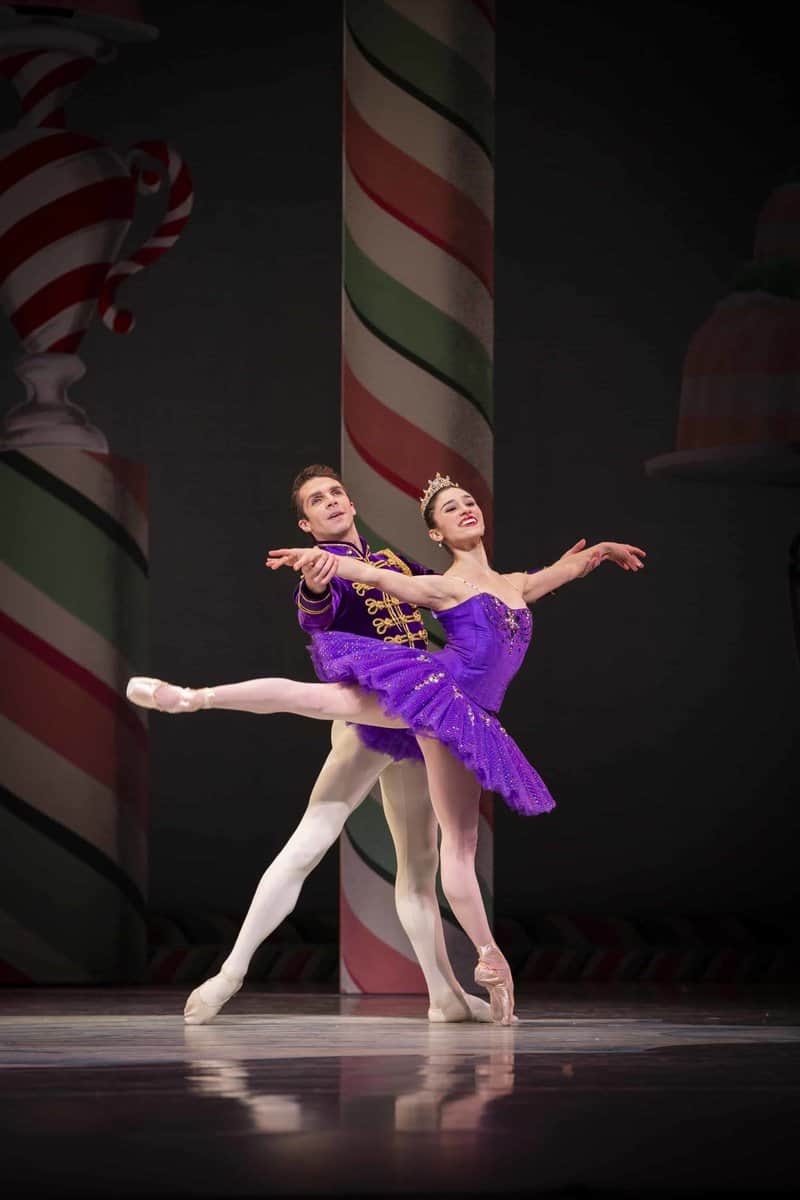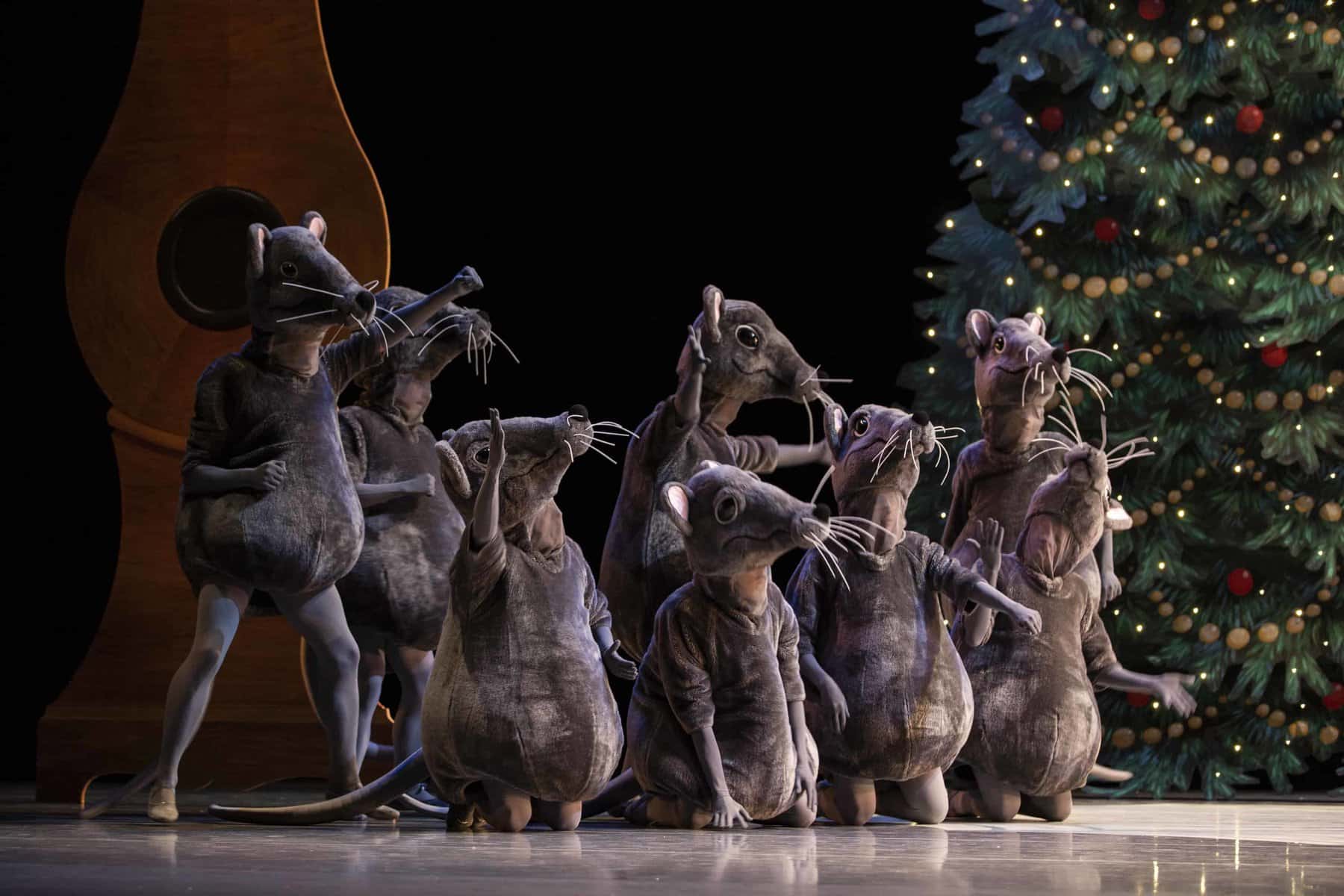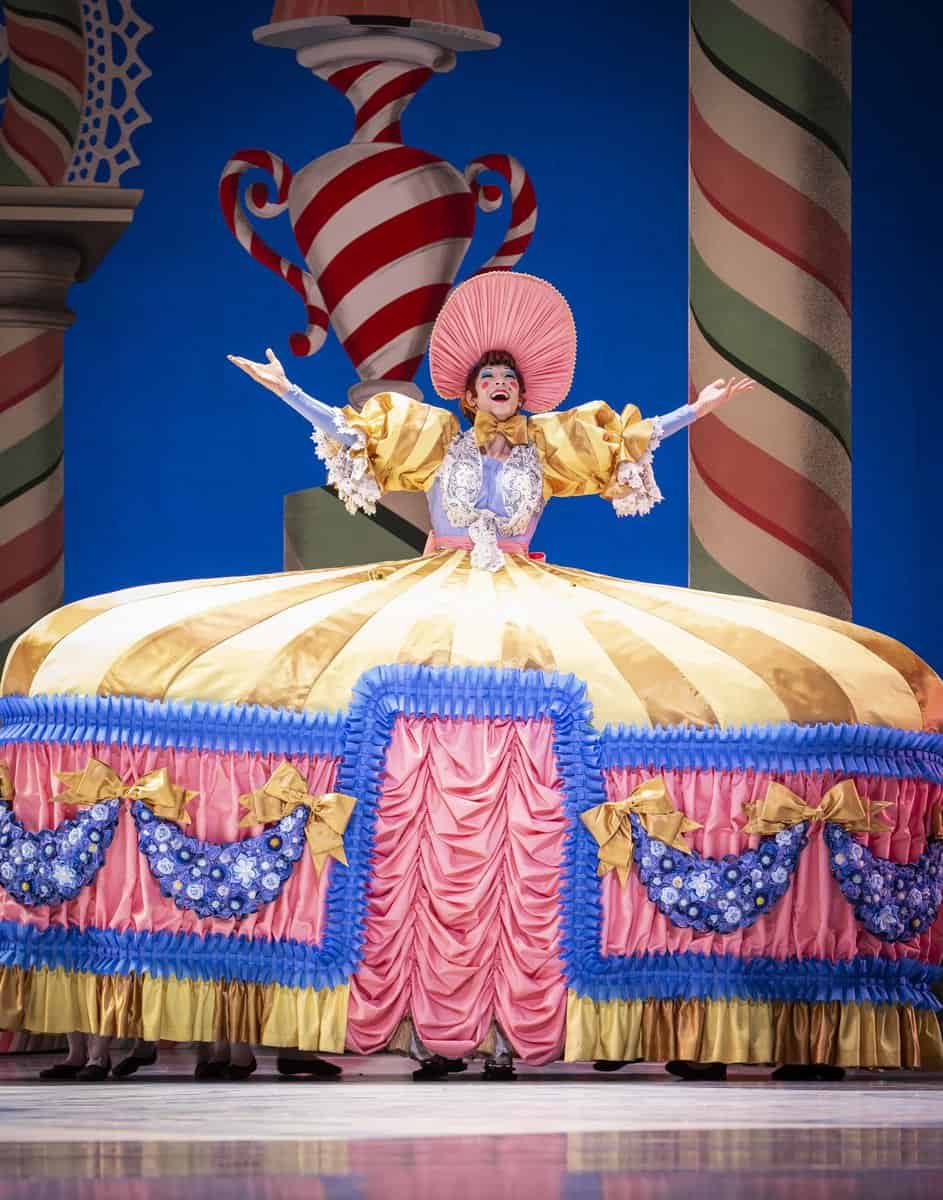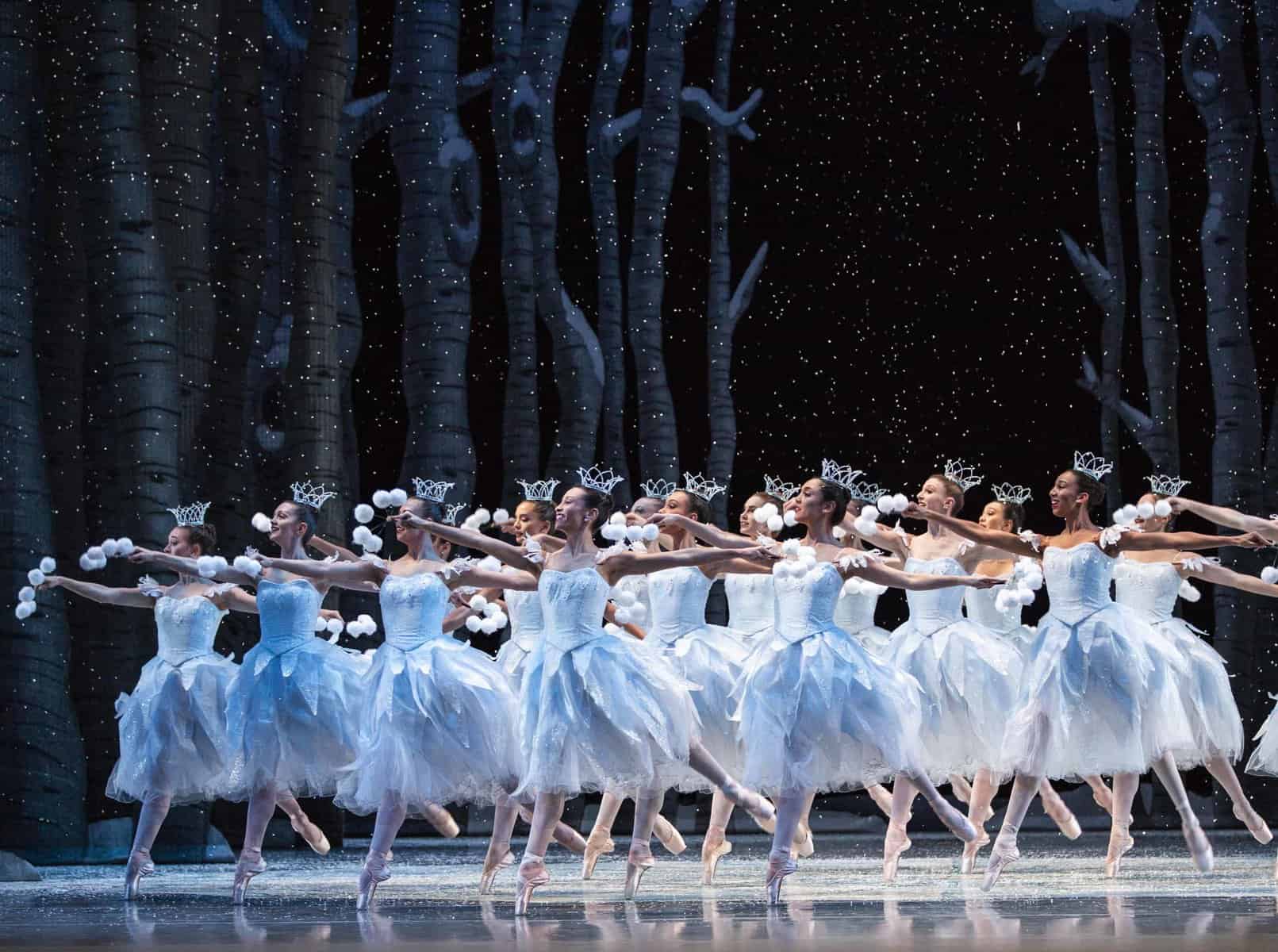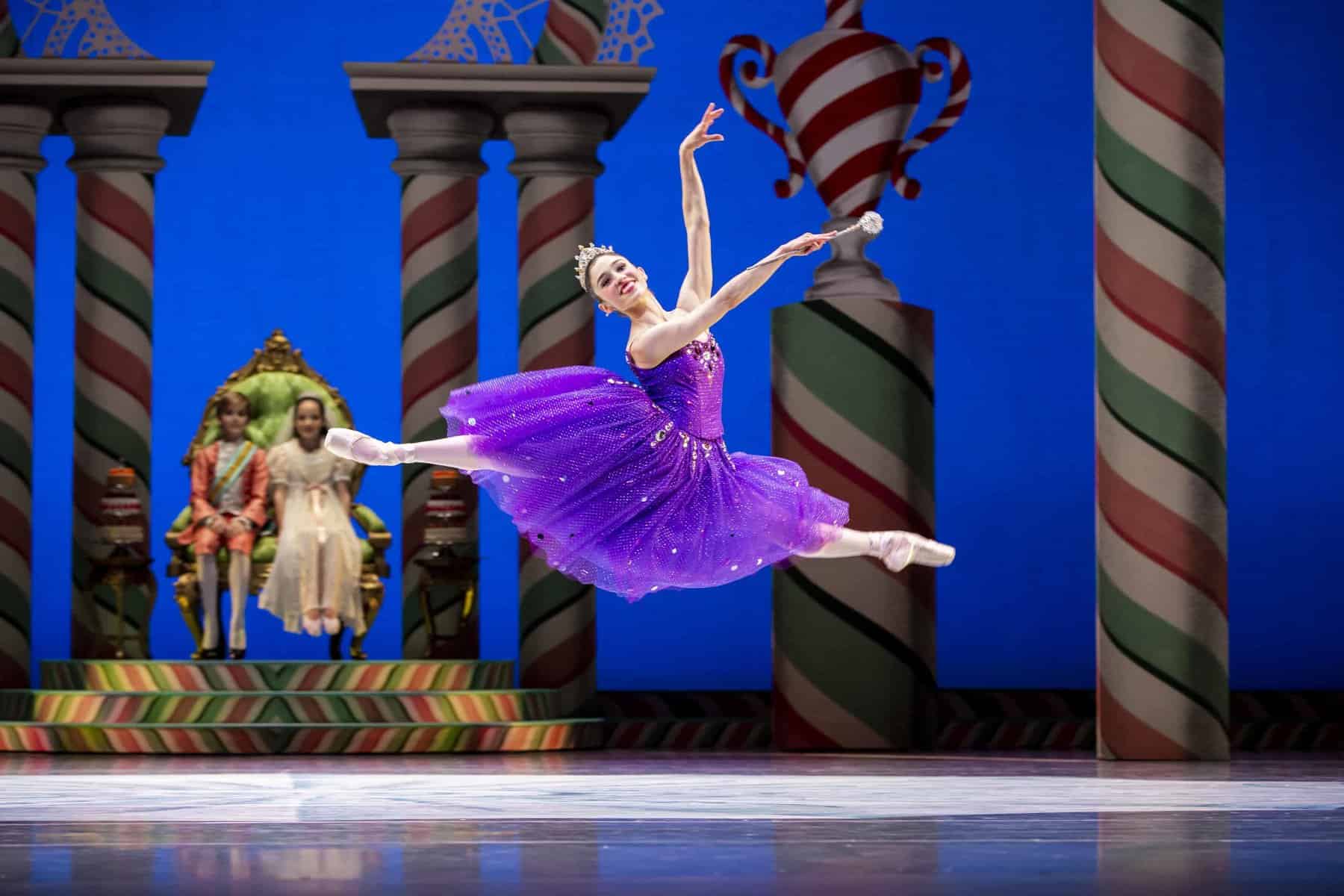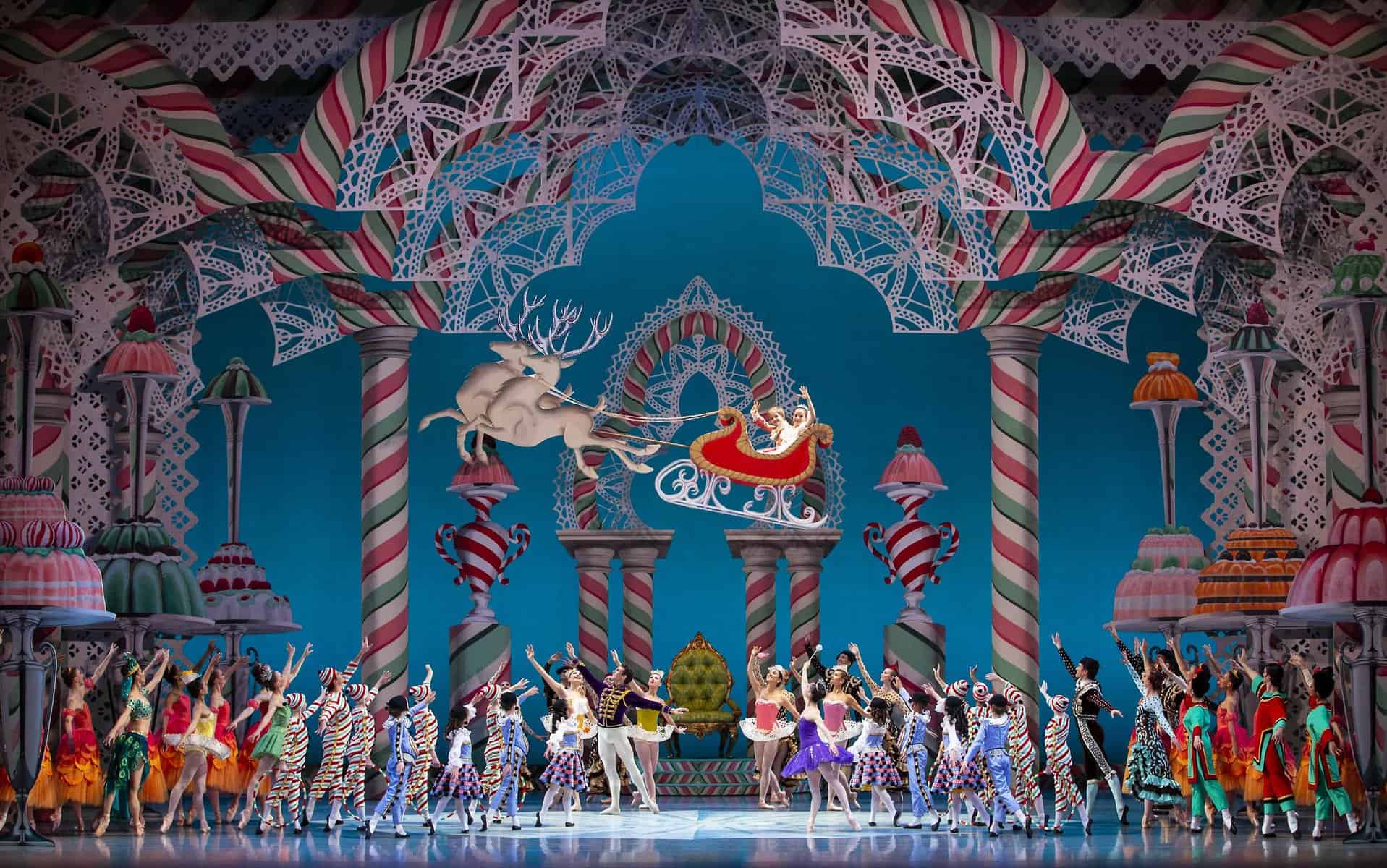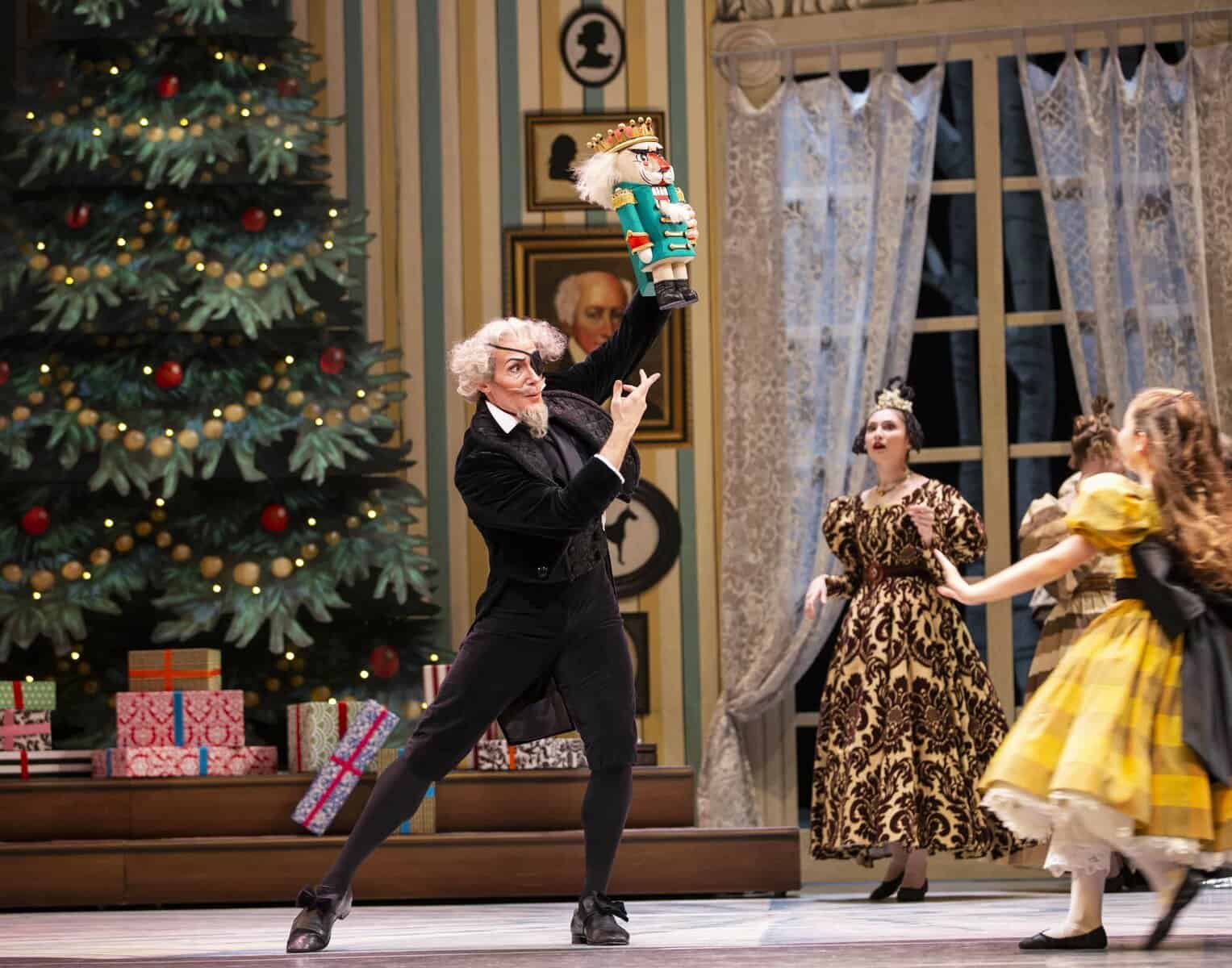George Balanchine’s The Nutcracker®
Ballet in Two Acts, Four Scenes, and Prologue
based on E.T.A. Hoffman’s tale, The Nutcracker and the Mouse King (1816)
Music
Peter Ilyich Tchaikovsky (The Nutcracker, Op. 71, 1891-1892, with an excerpt from The Sleeping Beauty, Op. 66, 1889)
Choreography
George Balanchine © The George Balanchine Trust
Staging
Judith Fugate with Peter Boal and Garielle Whittle
Scenic & Costume Design
Ian Falconer
Lighting Design
James F. Ingalls
Original Production Premiere
December 6, 1892; Imperial Ballet, St. Petersburg, choreography by Lev Ivanov
Balanchine Production Premiere
February 2, 1954; New York City Ballet
Pacific Northwest Ballet Premiere
November 27, 2015
Principal sponsorship support for the 2015 Pacific Northwest Ballet premiere of George Balanchine’s The Nutcracker® with original scenic and costume design by Ian Falconer, was made possible through the generosity of Dan & Pam Baty. Additional major support was provided by Patty Edwards, Carl & Renee Behnke, and Peter & Peggy Horvitz.
The works of George Balanchine performed by Pacific Northwest Ballet are made possible in part by The Louise Nadeau Endowed Fund.
Program Notes
“The Nutcracker at our theater is for children young and old. That is, for children and for adults who are children at heart. Because, if an adult is a good person, in his heart he is still a child. In every person the best, the most important part is that which remains from his childhood.” —George Balanchine
When George Balanchine staged The Nutcracker for New York City Ballet in 1954, it was the six-year-old company’s most ambitious project to date. The choreographer spent more than half of the production’s $40,000 budget on the Christmas tree, infuriating Morton Baum, chair of New York City Center’s finance committee, which had put up the money. Baum asked, “George, can’t you do it without the tree?” to which Balanchine replied, “The ballet is the tree.”
Balanchine had danced in the Maryinsky Theater’s production in St. Petersburg as a child. His roles included soldier, mouse king, little prince, and the lead in the hoop dance, which had been choreographed by its original interpreter, Alexander Shiryaev, for the 1892 premiere. Balanchine remembered the luxurious days before the Russian revolution and held them as an ideal. When Baum asked him to stage The Nutcracker, banking on the popularity of The Nutcracker Suite in the United States, Balanchine said, “If I do anything, it will be full-length and expensive.”
Those first performances of The Nutcracker in 1892 St. Petersburg received mixed reviews. Critics complained the music was “too symphonic” and the ballerina (the Sugar Plum Fairy) wasn’t given enough to do. The scenario had been put together by Ivan Vsevolozhsky, director of the Imperial Theaters and a great Francophile. He used as his source not the E.T.A. Hoffman German original of 1816, The Nutcracker and the Mouse King, but Alexandre Dumas’ 1844 French adaptation of Hoffman’s story, Histoire d’un casse-noisette (The Tale of the Nutcracker). Marius Petipa, the esteemed and prolific maître d’ballet of the St. Petersburg Imperial Theater, prepared instructions for Tchaikovsky and mapped out the sequence of dances, yet withdrew due to illness before rehearsals began. The task of choreographing The Nutcracker was left to Petipa’s assistant, Lev Ivanov, whose work was deemed uneven, from brilliant (the kaleidoscopic Waltz of the Snowflakes) to chaotic (the battle between the gingerbread soldiers and the mice).
Yet, the ballet endured and the suite of musical numbers subsequently drawn from Tchaikovsky’s complete score for performance in the concert hall was immediately popular. The composer was particularly delighted by his use of the celesta, the “heavenly” keyboard instrument newly invented in Paris, for the Dance of the Sugar Plum Fairy.
As he did with his other stagings of 19th-century ballets from the Russian repertory (Coppélia, Harlequinade), Balanchine followed the ballet’s story closely while adding his own contributions. With The Nutcracker, he referred back to the original Hoffman tale, adding Herr Drosselmeier’s nephew, the keyhole scene, in which Clara and Fritz eagerly anticipate seeing the family Christmas tree, and Clara’s wandering bed. He added some music as well, explaining, “When I did The Nutcracker in New York, I needed an entr’acte. And suddenly I recalled that the violin solo from Sleeping Beauty was the theme that is used when the Christmas tree grows in The Nutcracker. It’s a wonderful melody, with a magnificent upward swelling of sound that leaves you breathless. Tchaikovsky had decided that since no one played the violin solo from Sleeping Beauty he might as well use it here, instead of letting it go to waste!” The production was a huge effort, taxing the company’s resources. When, on opening night, the costumes were far from finished, Balanchine visited Karinska’s workshop with Jerome Robbins and, without saying a word, sat down among the seamstresses, picked up a needle and thread, and got to work. Robbins, who also choreographed the Nutcracker battle scene (an uncredited contribution), joined him.
Balanchine regularly made changes to his Nutcracker, including, perhaps surprisingly, the addition of elements from the St. Petersburg original. In 1968, he added a special effect to the pas de deux of the Sugar Plum Fairy and her Cavalier, in which the ballerina steps onto a sliding track on the stage and, supported by her partner, appears to glide across its surface. He also added wands with snowballs for the Snowflakes at the end of the first act, recalling the elaborate costumes of the Maryinsky’s dancers.
Although Balanchine’s Nutcracker established the ballet as a perennial holiday favorite and became the model for many subsequent productions, the ballet had been danced in the United States since 1940, when Ballet Russe de Monte Carlo performed Alexandra Fedorova’s staging of a one-act Nutcracker in New York City. The production subsequently toured the country throughout the ‘40s and ‘50s, giving many Americans their first experience of The Nutcracker. The first full-length Nutcracker in the U.S. was choreographed for San Francisco Ballet by Willam Christensen in 1944, only to be replaced in 1954 with a production by Willam’s brother, Lew Christensen.
When New York City Ballet moved to the newly built New York State Theater in 1964, the Nutcracker scenery was completely redesigned to take advantage of the larger space. (The technical superiority of the new theater allowed an even more magnificent tree.) That same year, a young Judith Fugate, newly enrolled in the School of American Ballet, danced the role of Clara for the first time. She would continue in the role for four seasons before moving on to other parts, eventually joining New York City Ballet and adding the leading roles of Dewdrop and the Sugar Plum Fairy to her repertory. In 2015, Fugate takes on the role of répétiteur, joining with Peter Boal and Garielle Whittle to stage Balanchine’s Nutcracker for Pacific Northwest Ballet.
Peter Boal was accepted into the School of American Ballet in 1975. He first performed in Balanchine’s Nutcracker as a Party Boy. Fugate was his first stage mother and held his hand tightly as she pulled the nervous ten-year-old onstage. He moved on to the role of the Little Prince, and then Bed Boy, another uncredited part, this for a confident teenager who steers Clara’s magic bed. Boal joined New York City Ballet and continued to move through the range of Nutcracker roles, eventually performing as Cavalier to Fugate’s Sugar Plum Fairy. In 2014, Boal returned to New York City Ballet as a guest artist to reprise the role of Herr Drosselmeier for the School of American Ballet’s annual Nutcracker benefit.
Pacific Northwest Ballet has its own Nutcracker history, which now intersects with Balanchine’s. In 1975, Pacific Northwest Dance Ballet Company, as PNB was then called, acquired Lew Christensen’s Nutcracker, performing the work for eight seasons. In 1983, under Artistic Directors Kent Stowell and Francia Russell, the Company presented a new production with choreography by Stowell and scenic and costume designs by famed children’s author and illustrator Maurice Sendak. The Stowell and Sendak Nutcracker contributed significantly to the Company’s identity, holding the stage for 32 seasons. In 2015, PNB acquired George Balanchine’s iconic production, blending Peter’s Boal’s personal history—his New England childhood and his 30-year involvement with the Balanchine Nutcracker as both a student and professional dancer—with the future of the Company. New designs by another renowned children’s author and illustrator, Ian Falconer, carry the Balanchine staging forward into the 21st century, while the staging by Fugate, Boal, and Whittle affirms the heritage of a tradition reaching back to 1892 and the grandeur of the Imperial era.
Notes by Doug Fullington.
Original Costume Sketches by Ian Falconer

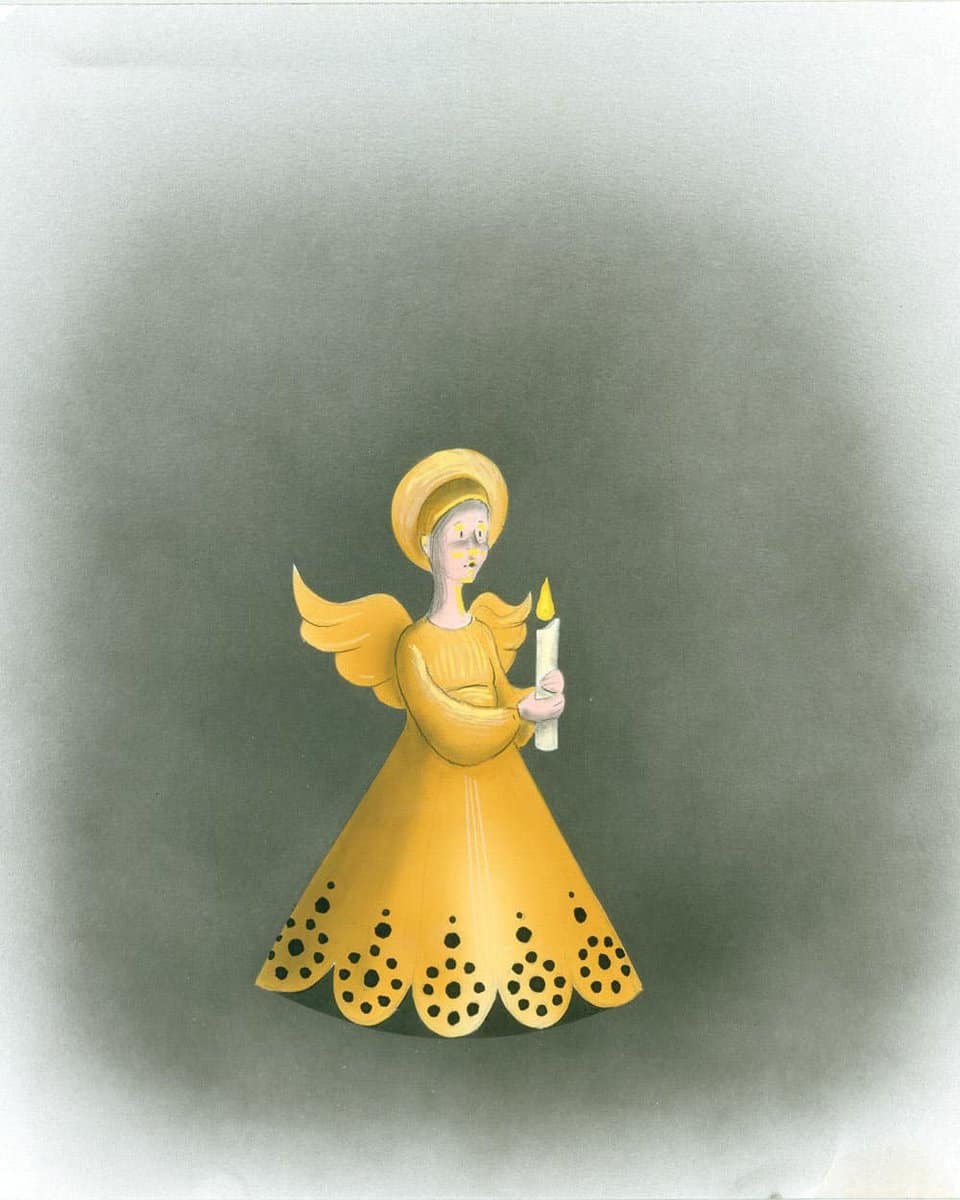
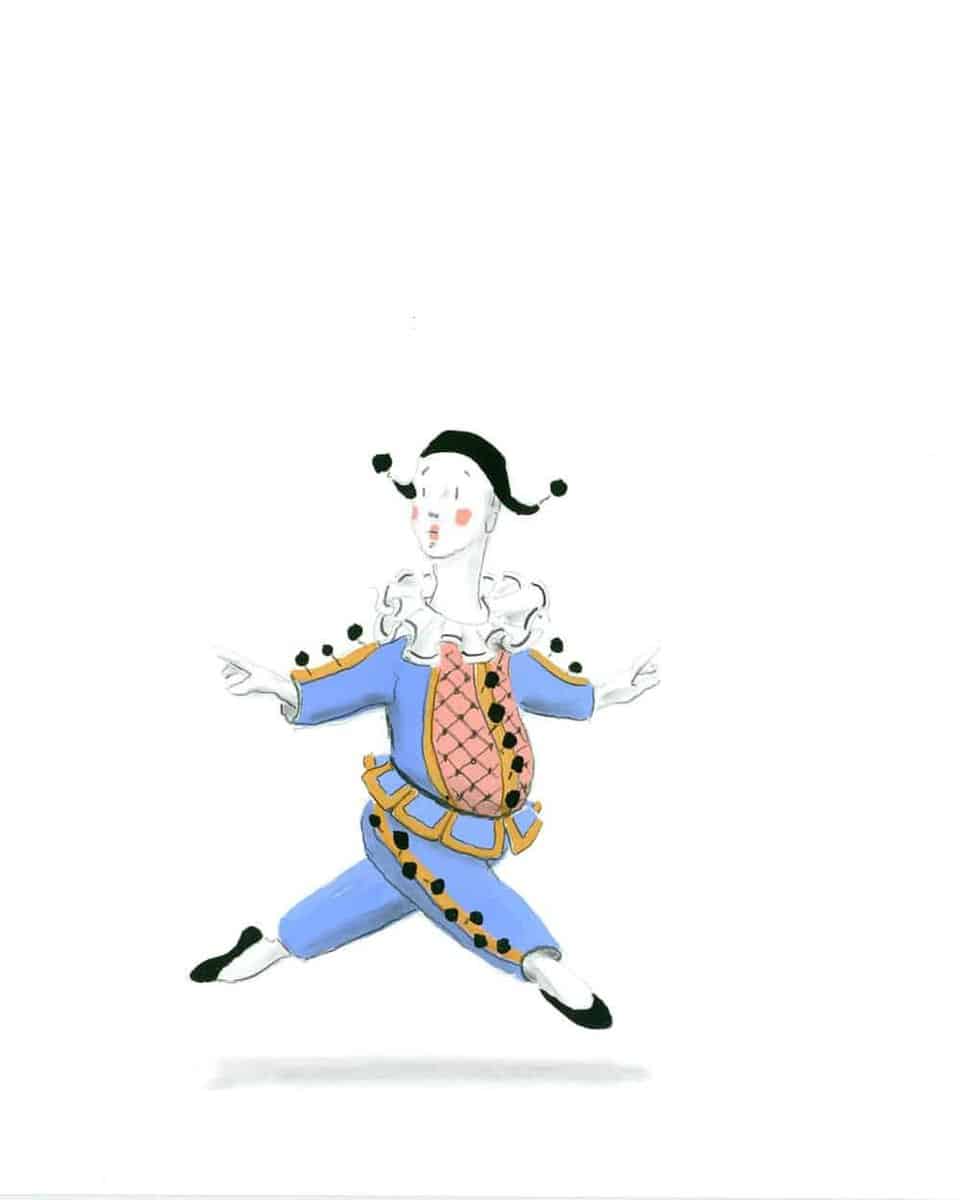
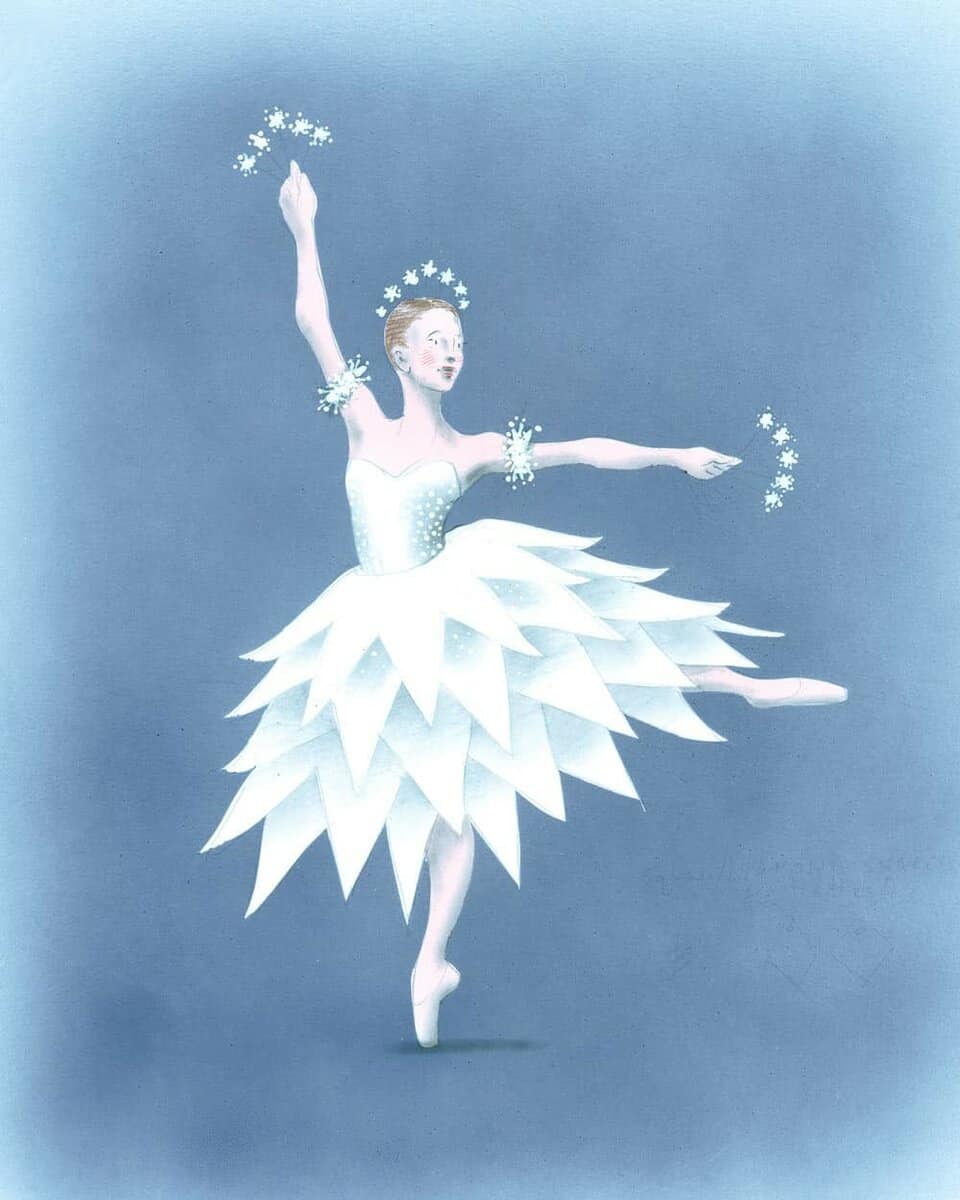
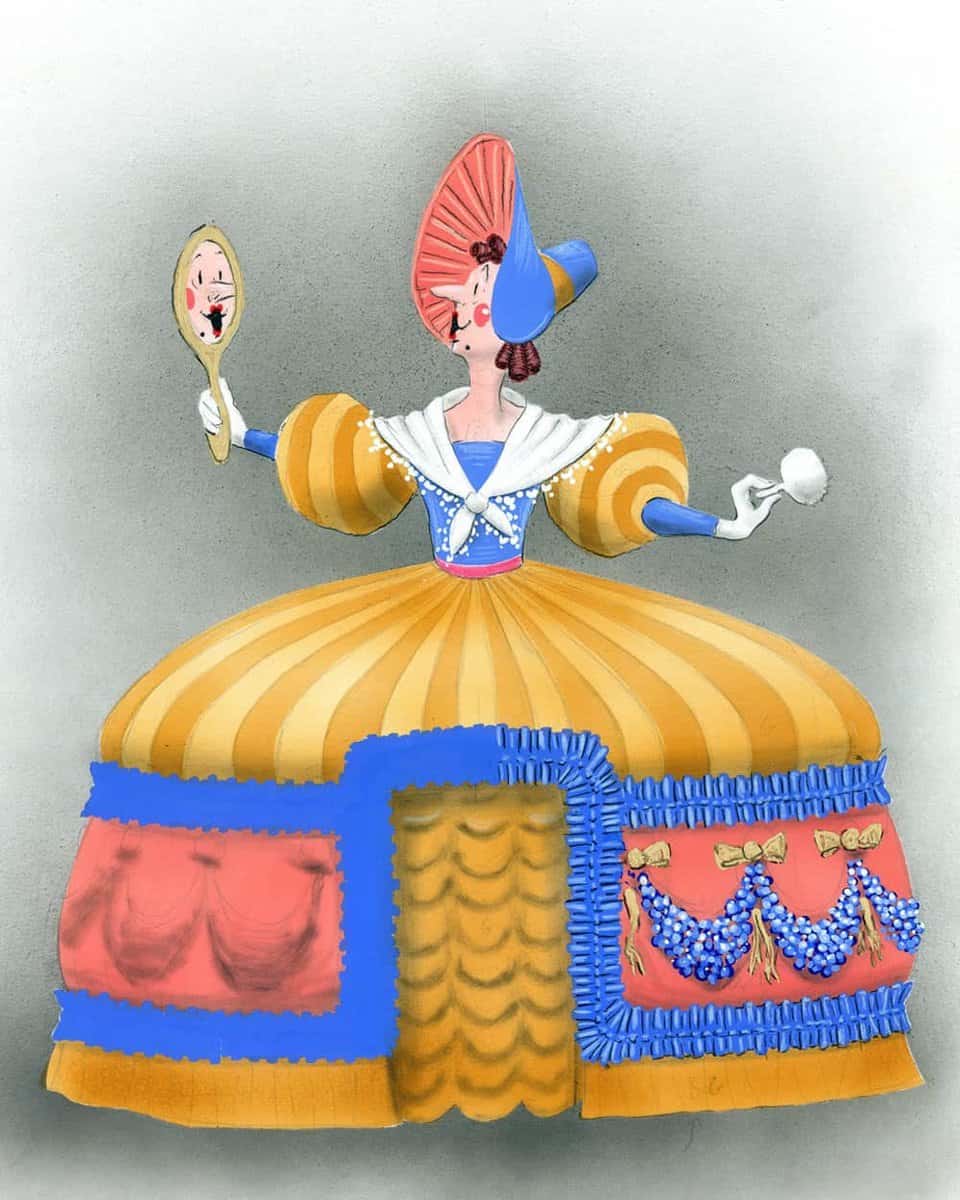
Sketches by Ian Falconer
George Balanchine’s The Nutcracker®, choreography by George Balanchine © The George Balanchine Trust. Photo © Angela Sterling.

